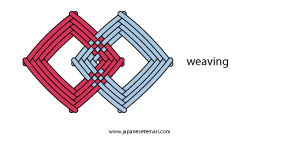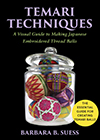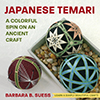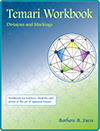How temari shapes intersect
One of the most fascinating aspects of temari is composing a design by experimenting with different arrangements of stitched shapes and the ways that they intersect. There are several methods including
- overlapped
- interlocked
- layered
- woven
1. Overlapped stitching - Stitch one shape completely. Then stitch another shape and lay all threads on top.
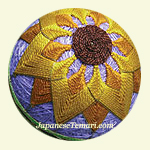
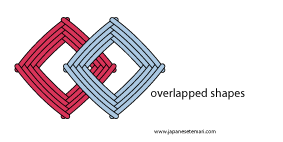
2. Interlocked stitching (nejiri kagari) - A design in which one shape is stitched completely and then, a second shape is stitched so that it weaves in and out of the first shape. Direct translation of nejiri kagari from Japanese is “interlocking or twisted stitching.”
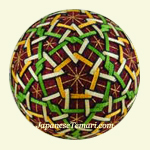

3. Layered stitching (kousa kagari) - A design made by building up layers by alternating stitching on different shapes. For instance, to make a layered triangles design, stitch first around one triangle (1 row), then around another triangle (1 row). Continue alternating between the two triangles. The translation from Japanese is “crossed stitching."
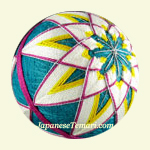

4. Woven - Weave through a previously stitched shape between stitches. Do more than just interlock - stitch one shape completely and then weave over and under individual threads to create a more intricate design. Patterns found in woven fabrics and even chair caning can be recreated on temari.
